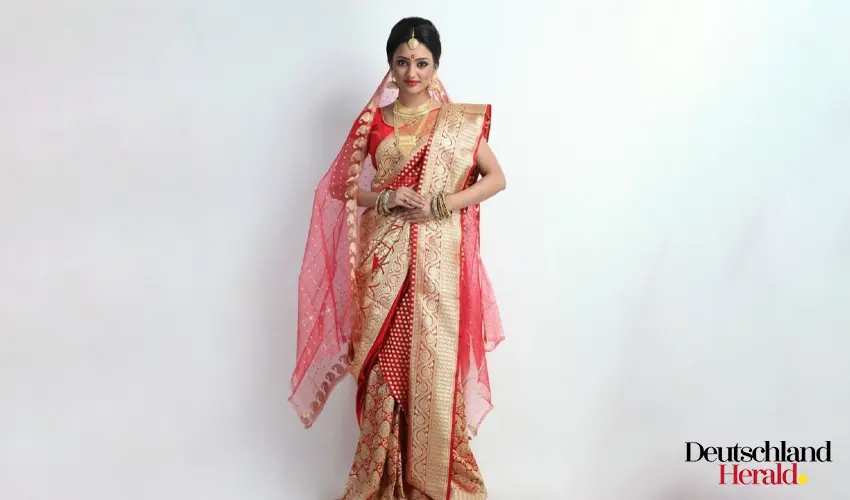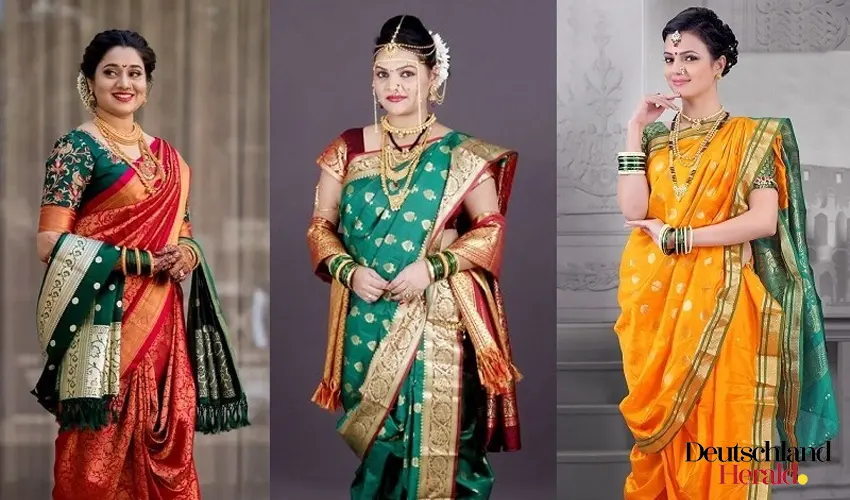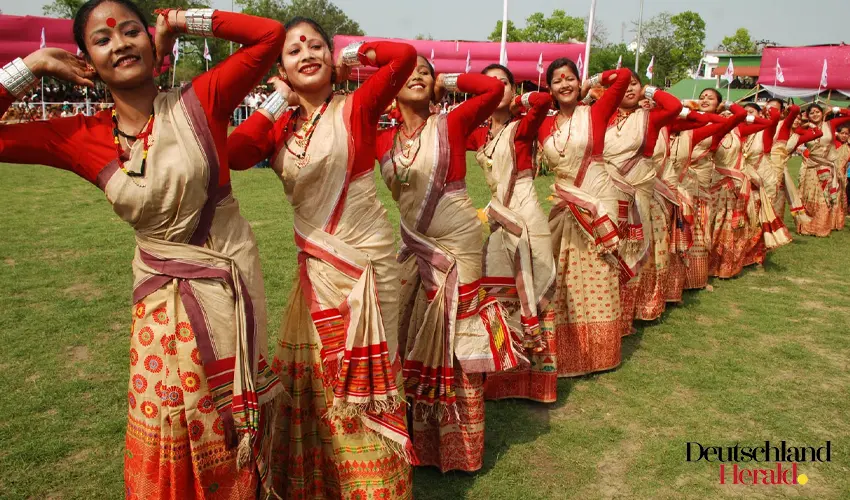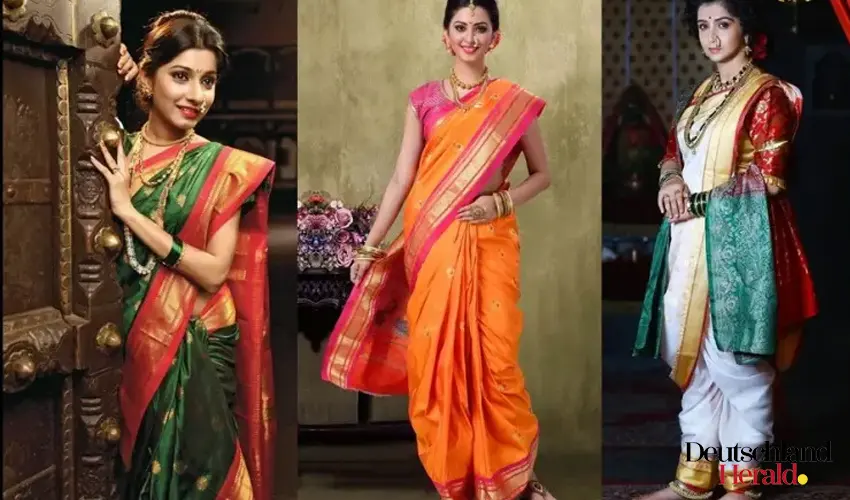Draping Elegance: A Guide to Different Saree Styles

The saree, a traditional Indian garment, is a timeless symbol of grace and beauty. It is a versatile attire that can be draped in various ways, each reflecting the distinct cultural heritage of different regions in India. Saree styles vary from region to region, bringing forward beautiful designs that flatter the feminine figure. Looking to find different saree draping styles? You’ve come to the right place.
8 Different Saree Styles to Watch Out For
There are so many interesting saree draping styles in India. Being known for its diversity, it comes as no surprise that the country has multiple saree styles that are popular. From the intricate pleats of the Nivi style to the flowing elegance of the Bengali drape, let us take a journey through the mesmerizing world of saree draping styles.
- Nivi Style
- Bengali Style
- Maharashtrian/Nauvari Style
- Gujarati Style
- Tamilian/Madisar Style
- Kerala Style
- Assam Style
- Goan Style
Nivi Style

Originating from Andhra Pradesh, the Nivi style is one of the most common and widely recognized saree draping techniques. It involves pleating the saree fabric neatly and tucking it into the waistband, with the loose end draped over the shoulder. This style highlights the curves of a woman’s body and allows for ease of movement. It is popularly worn in North India and is often associated with formal occasions. You can spot celebrities wearing sarees in this draping style.
Bengali Style

The Bengali saree style is known for its artistic flair and distinctiveness. Traditionally worn by women from West Bengal, it features wide pleats at the front, which are then tucked into the waist, and the loose end is draped over the left shoulder. The pallu (the loose end) is often richly decorated with intricate designs or embroidery, adding to its grandeur. This style exudes elegance and is commonly worn during festive celebrations and weddings.
Maharashtrian/Nauvari Style

The Maharashtrian saree draping style, also known as the Nauvari style, is unique and reflects the strong cultural roots of Maharashtra. It involves draping the saree like a dhoti (a traditional men’s garment), with the pleats tucked between the legs and the loose end draped over the shoulder. The Nauvari style is known for its comfort and is often worn during traditional Maharashtrian dance forms like Lavani. It symbolizes the strength and independence of women in Maharashtra.
Gujarati Style

The use of vibrant colors and intricate pleats characterizes the Gujarati saree draping style. The saree is wrapped around the body twice, with one end tucked at the back and the other draped over the shoulder. The pallu is then brought to the front, pleated, and pinned neatly. This style often involves the use of a backless blouse, showcasing the rich embroidery or mirror work on the back. The Gujarati style is popular during Navratri and other cultural festivals in Gujarat.
Tamilian/Madisar Style

The Madisar style of saree draping is traditionally worn by married women in Tamil Nadu. It involves wrapping the saree around the waist and making two pleats at the front, which are then brought between the legs and tucked at the back. The remaining fabric is draped over the shoulder, creating a modest and elegant look. This style is known for its simplicity and is associated with cultural ceremonies and religious rituals in Tamil Nadu.
Kerala Style

The Kerala saree style, also known as the Mundum Neriyathum, is the traditional attire of women in Kerala, a beautiful coastal state in South India. This style showcases a distinct two-piece saree with a plain off-white or cream-colored mundu (lower garment) and a colorful neriyathu (upper garment).
Assam Style

The Assam style of saree draping is deeply rooted in the culture and traditions of the northeastern state of Assam. The saree primarily worn by Assamese women is known as the Mekhela Sador. It consists of two main pieces—the Mekhela, which is the lower garment, and the Sador, which is the upper garment.
Goan Style

The Goan style of saree draping reflects the vibrant and lively culture of Goa, a coastal state in western India. This unique draping style is often seen during traditional Goan festivals, weddings, and cultural events. The Goan saree draping style emphasizes comfort, ease of movement, and a touch of elegance.
Saree Styles: Experiment Away
The saree, with its myriad draping styles, is an epitome of tradition and grace. Each regional style brings with it a unique charm, reflecting the diversity of Indian culture. Whether it’s the regal Nivi style, the artistic Bengali drape, or the vibrant Gujarati draping, saree draping techniques continue to evolve, adapting to modern fashion trends while preserving their cultural significance. Embracing these various styles allows women to celebrate their heritage and express their individuality with elegance and poise.

-

 Informative3 years ago
Informative3 years ago21 Amazing Fruits That Are Not Round
-

 Science3 years ago
Science3 years agoHow To Make a Dry Ice Bomb at Home? Risks and Precautions
-

 How to3 years ago
How to3 years agoHow to Put a Tampon On: Step by Step Guide
-

 How to3 years ago
How to3 years agoHere’s How to Know When The Oil Cartridge Is Empty
-

 Informative3 years ago
Informative3 years agoElf Ear Surgery: Cost, Procedure, and Risks
-

 How to3 years ago
How to3 years agoFixed: The Torrent You Are Trying To Add is Already in The List
-

 How to3 years ago
How to3 years agoHow To Thaw Frozen Pipes Underground
-

 How to3 years ago
How to3 years agoSolved: How to Change Your Age on TikTok? (2021)